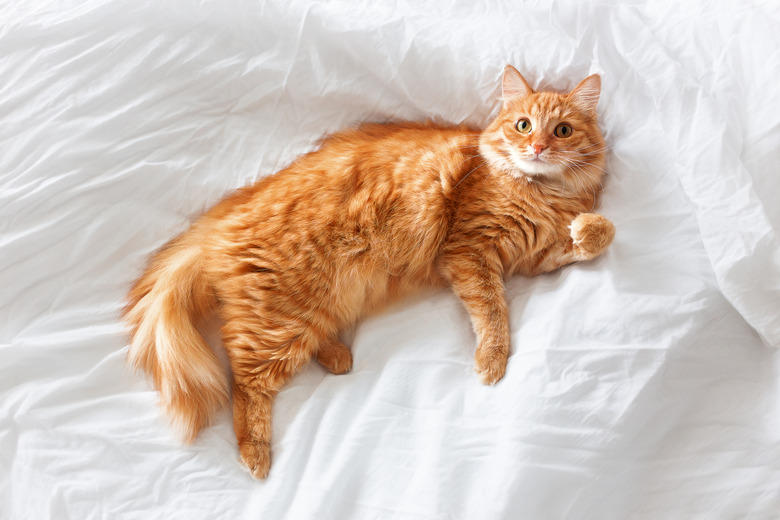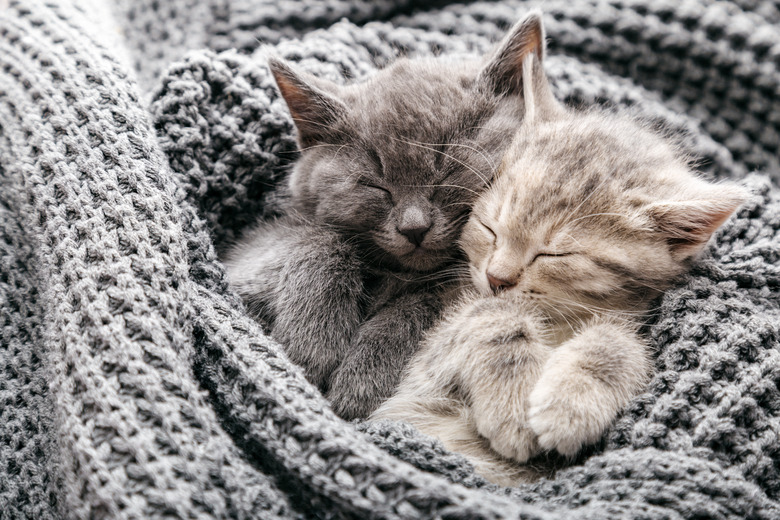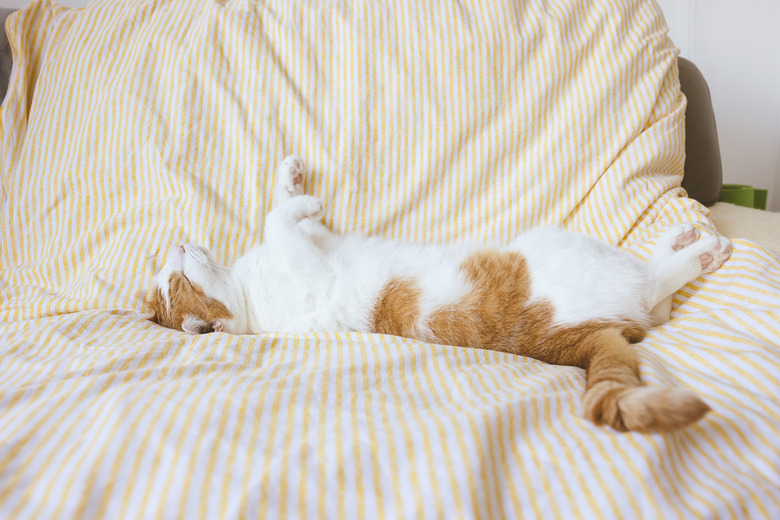How Can You Tell If A Cat Is Cold?
When the temperatures cool in the winter months, people begin wearing warmer, cozier clothing. Yet, cats don't have the same luxury.
Although, we secretly wish they would sport cute sweaters and fluffy snow pants during the cold weather season — cats just don't seem interested in fashion.
Since your kitty doesn't put on a beanie and gloves when they're feeling frosty, how can you tell if a cat is cold?
Can cats get cold?
Can cats get cold?
It turns out that cats are often more sensitive to cold weather than their humans are.
The exact temperature cats being to feel cold is unclear. This is most likely due to varying body weights, coat lengths, and general individual body chemistry.
However, veterinarians largely agree that the optimal temperature for both indoor cats and outdoor cats is between 80 – 100 degrees Fahrenheit. So it's safe to assume when the temperature drops below 80 degrees Fahrenheit, your cat may start to feel a bit nippy.
This temperature, of course, is just a starting point, as outdoor cats may be better acclimated to lower temperatures.
Be especially vigilant about the comfort of hairless cats and senior cats during the cold months, as they are generally more sensitive to lower temperatures.
Also, keep in mind that humidity and wind chill factors affect the real feel of the weather for both cats and humans alike.
What is a cat’s normal body temperature?
What is a cat's normal body temperature?
A cat's normal body temperature is between 99 – 102.5 degrees Fahrenheit (37.2 – 39.2 degrees Celsius).
When they drop below this ideal range, you'll notice cats instinctively self regulating their core temperature by warming up in sun beams, on laptops, and by napping on your neck and face. (Cute, right?)
If you're curious about whether or not your kitty is cold, read our guide to taking a cat's temperature without a thermometer.
How to know when a cat is cold
How to know when a cat is cold
In most cases, felines tend to hide injuries and weakness. It's a form of self preservation.
So it may be difficult to tell when your kitty is chilly. Nonetheless, here are the most common ways to tell if a cat is cold.
Seeks warmth
Seeks warmth
Cold weather triggers a cat's instinct to warm up. Your kitty will cuddle up next to you, heating vents, radiators, or just about anything in the house that emits heat.
When the temperature drops, your cat's body must work harder to maintain homeostasis, and sleeping next to warm things is a smart way to warm up and conserve energy all at once.
Less active
Less active
Your cat may be less active than they normally are when they're cold, opting for more naps during the hours when they're usually active.
Again, similar to how your kitty will snuggle up next to you, being slightly lazier than normal is an efficeint way to conserve energy.
Rushes to into the house
Rushes to into the house
No doubt you've noticed your cat waiting by the door, eagerly anticipating mealtimes or perhaps to drop a dead bird on the kitchen floor.
When your kitty is cold, they will be more enthusiastic or urgent about coming in from the outdoors. So be sure to give your cutie an assist and open that door for them during cold weather.
Avoids going outdoors
Avoids going outdoors
While many cats will go in and out of the house continually, this drive is subdued when it's cold outside. Lucky you!
Behavioral signals
Behavioral signals
Your kitty may communicate that they are cold with subtle, and not so subtle, behavioral cues such as tapping on the door when they're (impatiently) waiting to be let in, or even deploying vocalizations to signal to humans their pressing need to warm up.
These behavioral signals are not universal; rather, they will be specific to your cat. So watch for cues during cold weather and make sure your kitty gets lots of cuddles.
Increased appetite
Increased appetite
A study by Liverpool's School of Veterinary Science discovered that cats eat more in the winter months and eat less in the summer months — by nearly 15 percent.
When the weather is colder, your cat uses more energy to maintain their base temperature (homeostasis), which correlates with an increase in appetite.
Physiological ways to tell when your cat is cold
Physiological ways to tell when your cat is cold
Additional ways to tell if a cat is cold include checking the tips of their ears, tips of their tail, and paw pads for warmth. If these parts of your kitty's body are cold, then the chances are that their internal temperature has dropped, too.
Similarly, if a cat is shivering or panting (breathing heavily), this could also mean they are cold. However, both of these physiological behaviors are also indicators of other conditions, including hypoglycemia, fever, stress, pain, and even poisoning.
So always be sure to consult with your veterinarian if you suspect that your cat's shivering is a symptom of a more serious problem.
In summary
In summary
When your cat needs extra cuddles, there's a good chance they're cold. (And that they love you, obviously.)
Cats may display a variety of behaviors when cold such as snuggling, lethargy, eating more, and avoiding the outdoors.
So be sure your kitty has extra blankets and warm spaces during the cold weather months, and pay extra attention to any cues that they may need to warm up — and then give them a good cuddle.


